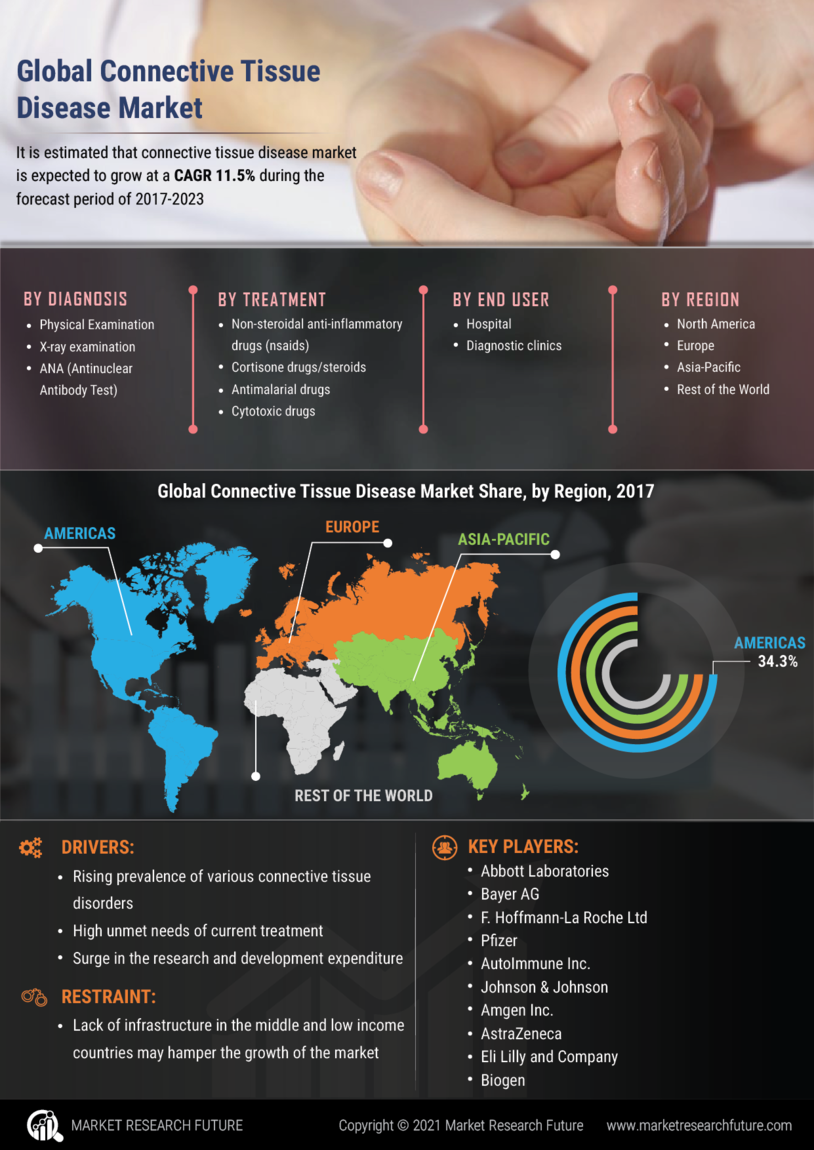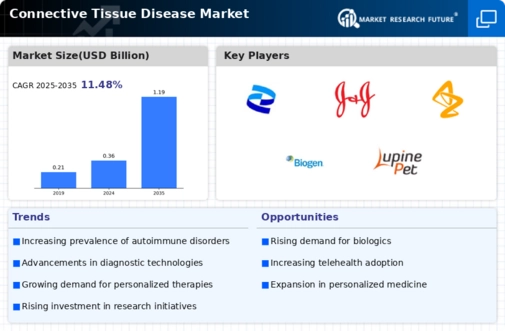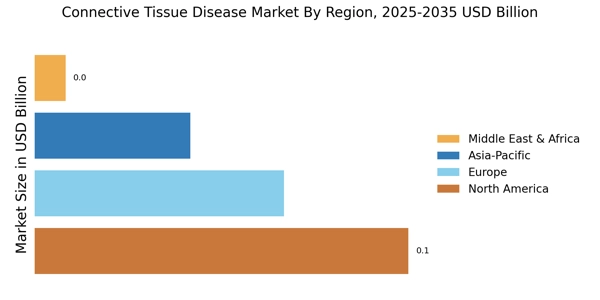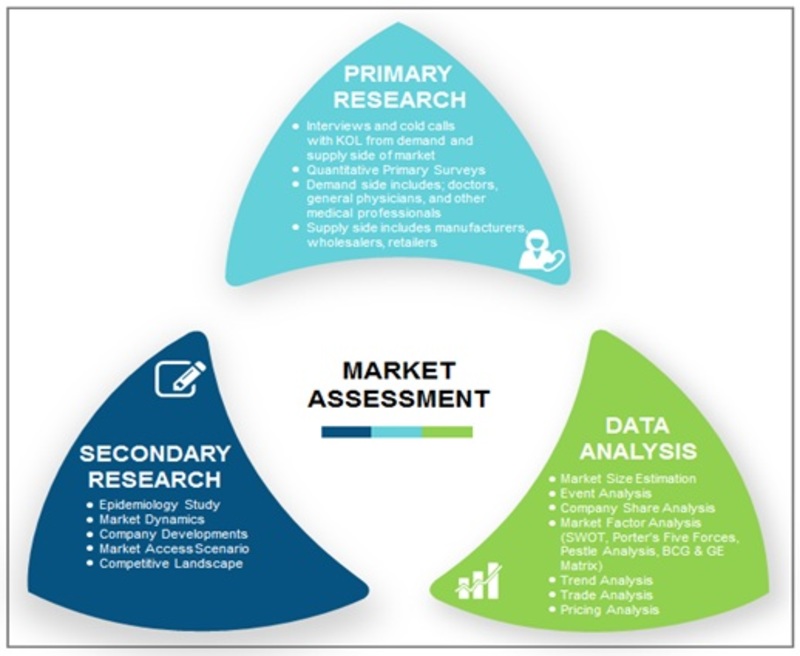Increased Awareness and Education Initiatives
The heightened awareness and education initiatives surrounding connective tissue diseases are significantly influencing the Connective Tissue Disease Market. Organizations and advocacy groups are actively promoting education about these conditions, leading to earlier diagnosis and treatment. This increased awareness is crucial, as many connective tissue diseases are underdiagnosed or misdiagnosed, resulting in delayed care. As healthcare professionals become more informed about these disorders, the demand for diagnostic tools and treatment options is likely to rise. Furthermore, public awareness campaigns are encouraging patients to seek medical attention sooner, which may lead to a larger patient base requiring management and therapeutic interventions. Consequently, the Connective Tissue Disease Market is poised for growth as awareness translates into increased healthcare utilization.
Rising Investment in Research and Development
Investment in research and development (R&D) is a crucial driver for the Connective Tissue Disease Market. Pharmaceutical companies and research institutions are increasingly allocating resources to explore novel treatment options and improve existing therapies. This trend is underscored by the growing number of clinical trials focused on connective tissue diseases, with hundreds of studies currently underway. The financial commitment to R&D is expected to yield breakthroughs in understanding disease mechanisms and developing innovative therapies. As a result, the market is likely to benefit from a pipeline of new drugs and treatment modalities, enhancing the overall landscape of the Connective Tissue Disease Market. Furthermore, collaborations between academia and industry are fostering a conducive environment for innovation, potentially leading to accelerated advancements in patient care.
Advancements in Biologics and Targeted Therapies
The development of biologics and targeted therapies represents a transformative trend within the Connective Tissue Disease Market. These innovative treatments offer more effective and personalized options for patients suffering from various connective tissue disorders. For instance, biologics such as monoclonal antibodies have shown promising results in managing autoimmune conditions, leading to improved patient outcomes. The market for biologics is anticipated to grow significantly, with projections indicating a compound annual growth rate of over 10% in the coming years. This surge is driven by the increasing approval of new biologic agents and the growing recognition of their efficacy in treating complex diseases. Consequently, the Connective Tissue Disease Market is likely to witness a shift towards these advanced therapeutic modalities, enhancing treatment paradigms and patient care.
Growing Prevalence of Connective Tissue Diseases
The rising incidence of connective tissue diseases is a pivotal driver for the Connective Tissue Disease Market. Conditions such as systemic lupus erythematosus, rheumatoid arthritis, and scleroderma are becoming increasingly prevalent, affecting millions worldwide. According to recent estimates, the prevalence of these diseases is projected to rise, with rheumatoid arthritis affecting approximately 1.3 million individuals in the United States alone. This growing patient population necessitates enhanced healthcare services and treatment options, thereby propelling market growth. As awareness increases, healthcare providers are more likely to seek innovative therapies and diagnostic tools, further stimulating the Connective Tissue Disease Market. The demand for effective management strategies and therapies is expected to escalate, creating opportunities for pharmaceutical companies and healthcare providers alike.
Technological Innovations in Diagnostics and Treatment
Technological innovations are reshaping the landscape of the Connective Tissue Disease Market. Advances in diagnostic technologies, such as genetic testing and imaging techniques, are enabling earlier and more accurate identification of connective tissue diseases. These innovations facilitate timely interventions, which are critical for improving patient outcomes. Moreover, the integration of telemedicine and digital health solutions is enhancing patient access to care, particularly for those in remote areas. The market is witnessing a surge in the adoption of these technologies, with projections indicating a substantial increase in their utilization over the next few years. As technology continues to evolve, it is likely to play a pivotal role in transforming treatment approaches and enhancing the overall efficiency of the Connective Tissue Disease Market.



















Leave a Comment